Recent Articles
Popular Makes
Body Types
Understanding Your Mechanic's Repair Order

Repair order ・ Photo by Iakov Filimonov-Adobe Stock
Taking your vehicle in for repairs is always a little bit stressful. For one thing, your car, SUV, or truck isn't operating the way it should, and that's bad enough. But you also know that any trip to the mechanic is an unplanned expense, and it could add up to a lot of money. We can't do much about all that, but we can help you understand the process and the paperwork involved. That means you can be confident you're getting the repairs you need, and you can approve the price before you commit to the work.
Asking a repair shop to fix your car is a legal contract, whether it's a dealer, chain repair shop, or an independent mechanic. The transaction is governed by state laws, and the laws are designed to protect both the mechanic and the customer. One legal requirement in most places is a written work estimate, signed by the customer, before the shop can bill for any work. Understanding your mechanic's repair order is key to staying on top of your repair bills.
What Is a Mechanic's Repair Order?
A mechanic's repair order is a legal document that specifies the work that will be performed on your vehicle and the price that will be charged for that work. In most places, there is no precise form for the work order, but it will always include the price of parts and an estimate for labor, as well as some extra space for related charges. A bottom-line estimate for parts, labor, and anything extra should appear on the form, showing you about what you should expect to pay.
When you sign the repair order, you are entering into a contract with the shop to make those repairs and to pay the estimated price. Sometimes new problems crop up during a repair, such as a broken part that was not immediately obvious. Some states limit the amount that a shop can add to the bill to 10%, while others require at least a phone conversation before any amount can be added to the bill. You can also request a phone call to discuss any work that goes beyond your estimate.
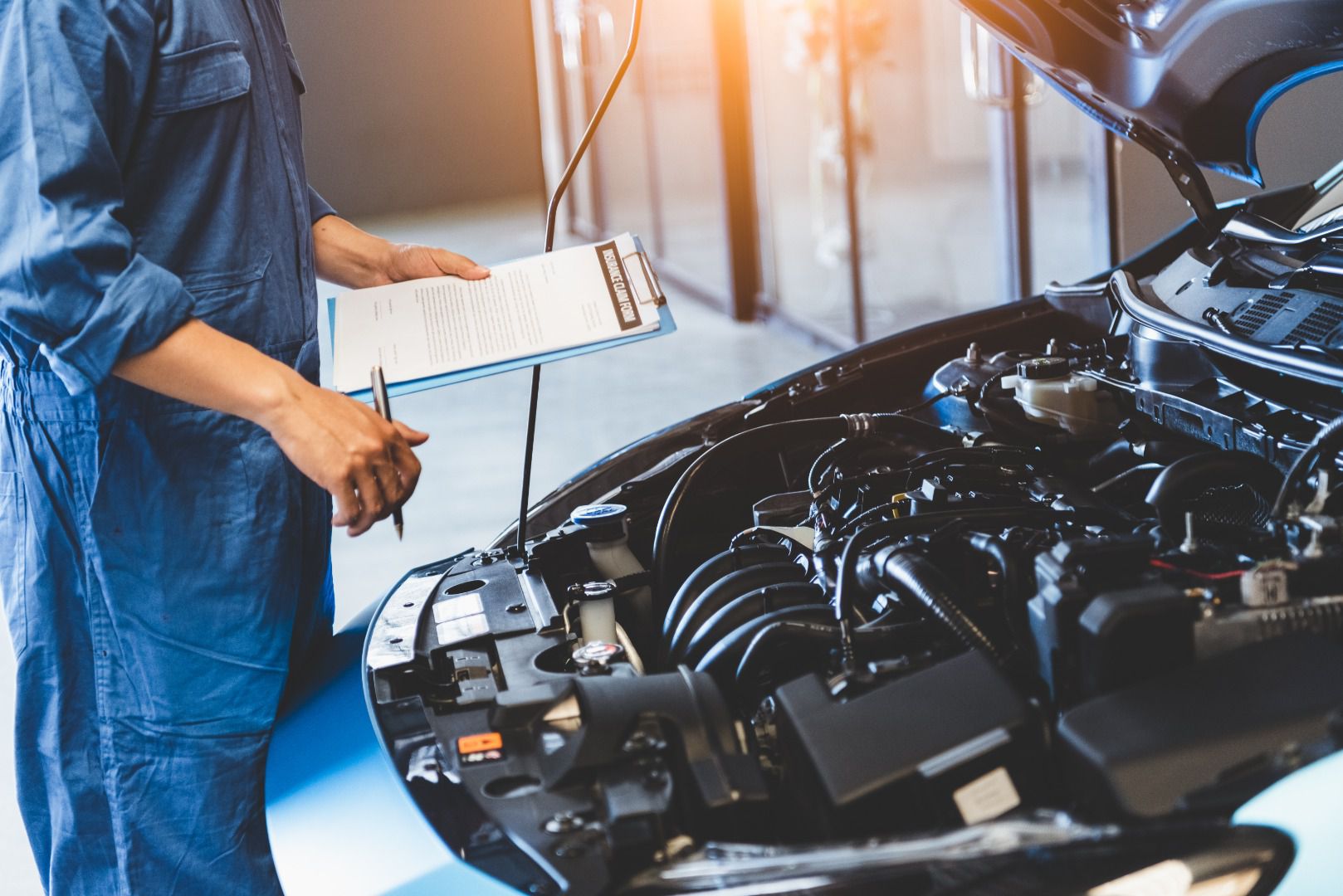
Photo by Shutter2U - stock.adobe.com
How to Read a Repair Order
Although repair orders are not standardized, they should always list each part's cost individually. By law, the repair shop should tell you and specify on the repair order whether the parts being quoted are manufacturer's original parts, aftermarket substitutes, or parts salvaged from a junkyard.
Most shops make a little profit on parts, but will often charge their customers less than list price. A combined price for all parts should appear at the bottom of the parts list and again as a line item near the total price. The same pattern is used for extras or accessories. These may be charges for the use of special tools or machines such as an air conditioning recharger or machine shop work. Some consumable supplies may also be listed in this section, or there may be separate places to list items like fuel, grease, and even rags that had to be used. Note that there are also charges for disposing of used coolant, oil, tires, and some other hazardous materials. These disposal charges are often included with extras or accessories. Similar to the parts price, there should be a total, and then a line item near the final total.
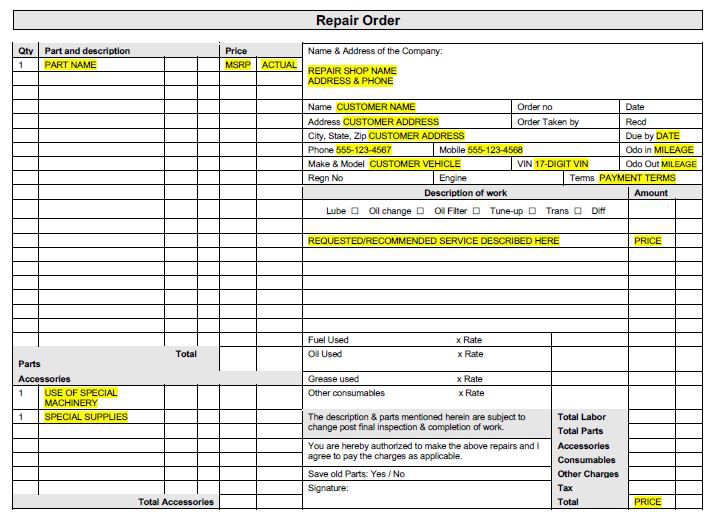
Photo by Jeff Zurschmeide
How Repair Shops Charge for Labor
Virtually every repair business has what's called a "shop rate" that is usually a dollar figure per hour. That shop rate covers the actual labor and a share of the expense of maintaining the building: rent, electricity, availability of basic tools, and so on. The price for labor of a repair is computed as the shop rate multiplied by the time it should take to perform the repair.
However, those time estimates aren't always accurate. Sometimes problems come up, such as stuck bolts, or the job may go very quickly. To be fair to both parties, there's a book that lists the standard estimated time for any common repair. This time has been determined as the amount of time it takes a professional mechanic to perform a careful job successfully, and that's the time, multiplied by the shop rate, that you should expect to pay. That way you don't get hit with an unexpected bill just because it took the mechanic longer than usual to do the job. The total estimate for labor will include the book rate for each repair to be performed, and then a labor total that is also entered at the bottom of the sheet.
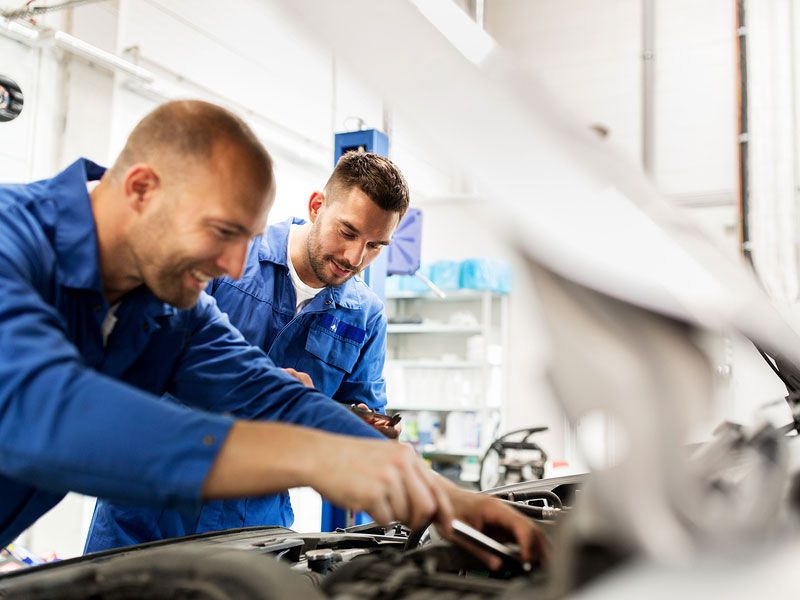
Photo by Big Stock
Names, Addresses, and Mileages
The last part of the repair order to fill out is basic information: the customer's name and address, and phone numbers, plus the name or initials of the employee who wrote the order, and basic information about the vehicle to be repaired.
The name and address are required to make the repair order a binding contract, while the information about the vehicle helps ensure that the correct parts are ordered and the correct repair procedures are used. Most repair orders on modern vehicles will require the VIN (vehicle identification number). This allows the shop to make sure that the parts ordered are exactly the right ones for your vehicle. Finally, there's a place to note the vehicle's mileage on arrival, and a place to note the mileage on departure. This helps ensure that your vehicle is not driven more than is necessary to diagnose and test the repair.
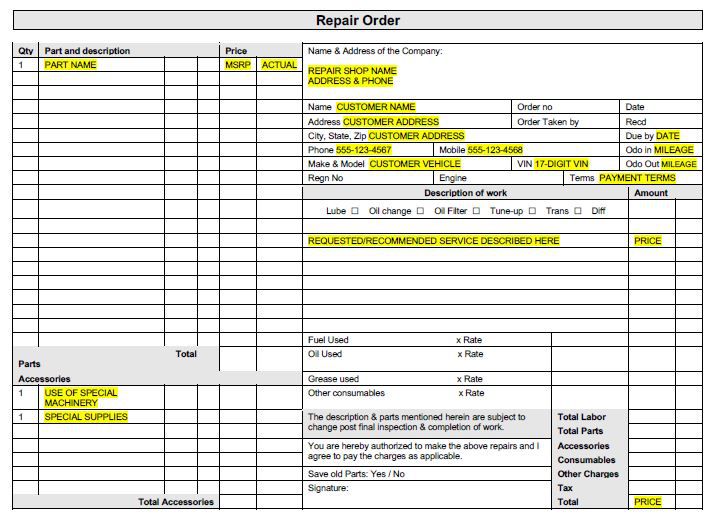
Photo by Jeff Zurschmeide
Core Parts Charges
With any repair shop, you should be given the chance to specify whether you would like your old parts returned to you at the conclusion of the repair. Some consumers like to inspect their old parts, and some even keep them as emergency spares. Getting parts returned is generally a matter of personal preference.
You can request your old parts back if you want them, but bear in mind that with many rebuildable parts, the old part has a "core" cash value that is subtracted from the price of the new part. If you take back the old part, this core price will be added to the price of the new parts. Core charges are common on alternators, water pumps, hydraulics such as brake master cylinders, and other rebuildable units.
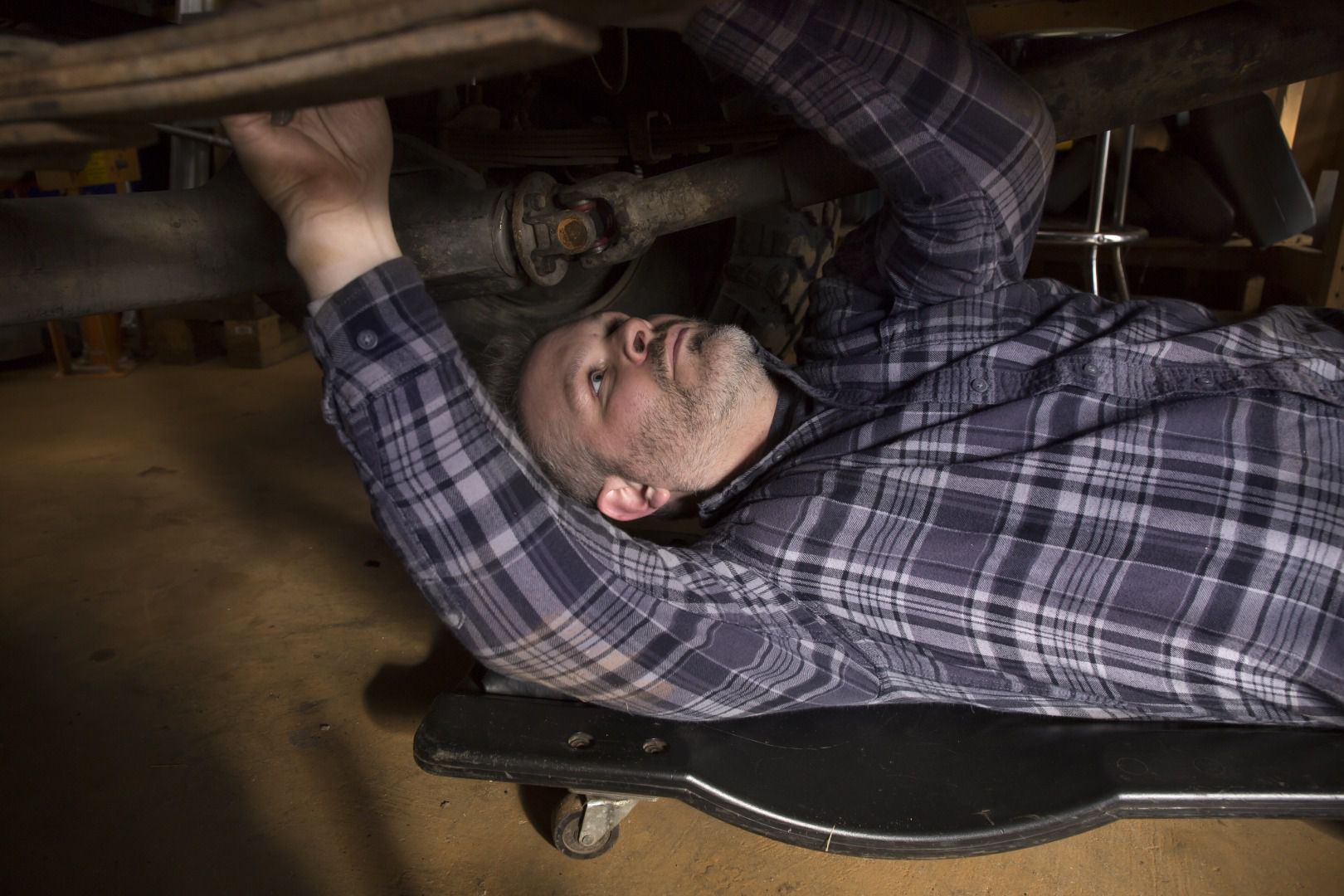
Photo by Adobe Stock
Confirming the Contract
When you bring your vehicle to a repair shop, the service advisor or desk clerk will prepare the repair order and present it to you for your signature. Signing the order creates the contract to do the work. You should be sure there is a subtotal for parts, extras, and labor, and that these all add up correctly to the bottom line total. Also, make sure that every part of the repair discussed is listed on the repair order. You don't want to pay the charges and then find that more work is needed.
Make sure you receive a copy of the signed repair order so that you can match it up to the work that was actually performed. The final amount may vary slightly from the estimate, but a competent shop will usually anticipate all charges. If things got difficult and took more time, a good shop will stand by its estimate. Lastly, get copies of any warranty promises in writing. New or reconditioned parts are often covered by a warranty that may or may not include additional labor to replace the part if it turns out to be defective. Make sure you understand all guarantees and have them in writing.

Photo by Dusko - stock.adobe.com